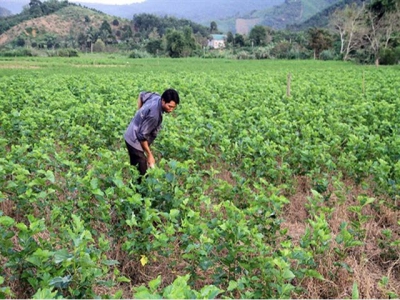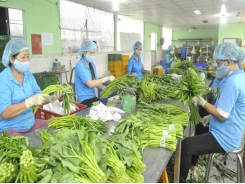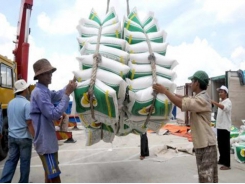Breeders to raise high-yield silkworms, reduce Chinese imports

Ho Chi Minh City — Experts have recommended the use of high-yield silkworm varieties that can adapt to Vietnamese conditions to reduce reliance on imports from China and other countries.
Planting mulberry in Lâm Đồng Province’s Da Teh District. Photo baolamdong
The Central Centre for Silk Mulberry Research has asked the Ministry of Agriculture and Rural Development for approval to implement a research project on mulberry silkworm breeding in the 2021-25 period.
Đặng Vĩnh Thọ, chairman of the Việt Nam Mulberry Association, said: “The industry will not have enough raw materials for manufacturing in the next 10-15 years unless the country develops a sustainable strategy.”
“Despite the increase in silk production every year, Việt Nam has to import thousands of tonnes of silk from China and Brazil for outsourcing work here which is exported to Japan, Italy, India and France.”
Under the project, the research centre and the Lâm Đồng Centre for Experimental Agriculture and Forestry Research will examine high-yield silkworm varieties with good cocoon quality.
Việt Nam’s mulberry silk industry has relied too much on silkworm breeding imports, especially from China, according to the Department of Livestock Husbandry under the Ministry of Agriculture and Rural Development.
The country imports 90 per cent of silkworm egg breeds from China through unofficial channels, but imports have faced challenges since the outbreak of Covid-19 in China.
The imports through unofficial channels have not been checked for quality and disease control, posing risks for producers.
In the last two years, Lâm Đồng, Đắk Nông, Đắk Lắk and Gia Lai provinces have developed 10,000 hectares of mulberry trees, whose leaves are fed to silkworms.
In Lâm Đồng Province, some 15,000 households are cultivating about 8,500 hectares of mulberry trees, but the province has to import about 500,000 boxes of silkworm eggs per year from China.
Thọ has recommended that the Ministry of Agriculture and Rural Development work with China to import silkworm eggs through official channels to ensure the quality of silkworm eggs.
He said the Ministry of Agriculture and Rural Development and the Ministry of Industry and Trade should take measures to prevent trade fraud and unidentified silk imports.
The industry is facing severe competition from countries such as China, according to the Department of Agricultural Product Processing and Market Development.
Experts said the industry should improve productivity, reduce costs, increase technology use, diversify products, and help enterprises build brands for Vietnamese silk.
Phùng Đức Tiến, deputy minister of Agriculture and Rural Development, said Việt Nam’s silk production ranks among the top five in the world, behind China, India, Uzbekistan and Thailand.
Last year, silkworm production reached nearly 9,200 tonnes, silk production more than 1,500 tonnes, and silk over 5.2 million metres.
According to the Việt Nam Mulberry Association, there are 32 provinces and cities nationwide planting mulberry trees, with an area of about 15,000 ha.
Lâm Đồng Province in the Central Highlands region has more than 8,500 ha and accounts for 73 per cent of the country’s silk production. The province has developed a mulberry tree ecoystem that includes silkworm raising, silk germination and silk weaving.
Có thể bạn quan tâm
Phần mềm

Phối trộn thức ăn chăn nuôi

Pha dung dịch thủy canh

Định mức cho tôm ăn

Phối trộn phân bón NPK

Xác định tỷ lệ tôm sống

Chuyển đổi đơn vị phân bón

Xác định công suất sục khí

Chuyển đổi đơn vị tôm

Tính diện tích nhà kính

Tính thể tích ao hồ




 Việt Nam sees cassava export reduction in two…
Việt Nam sees cassava export reduction in two…  Vietnam overtakes Thailand in rice exports
Vietnam overtakes Thailand in rice exports